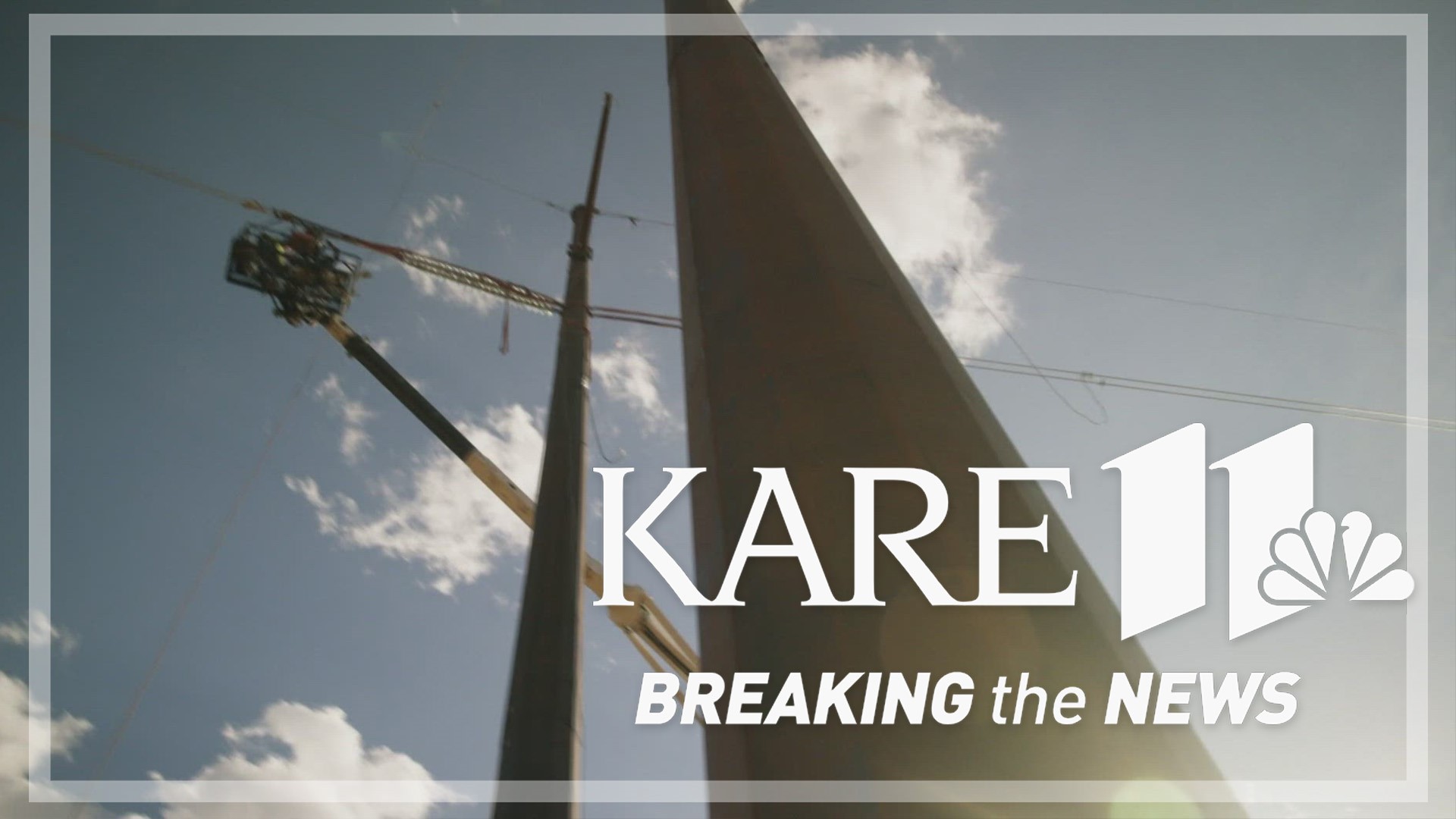MINNEAPOLIS — The U.S. Department of Energy is sending nearly a half billion dollars to make the electric grid more reliable in Minnesota and six other Midwest states and create stronger connections between the places where power is being generated and where it’s being consumed.
The $464 million grant, from the DOE’s Grid Resilience and Innovation Partnerships program, will go toward the construction of five high-voltage transmission lines that will span Minnesota, Iowa, North Dakota, South Dakota, Nebraska, Kansas, and Missouri. Those dollars are expected to spark at least $1 billion in private investments in the energy sector.
"To have the federal government, the U.S. Department of Energy, set up these programs and to offer this funding opportunity to build infrastructure it’s a very exciting opportunity for not only Minnesota, but for the upper Midwest region to be able to maintain the reliability of the system, and keep costs low for consumers," Jessica Burdette, director of energy reliability and security at the Minnesota Department of Commerce, told KARE.
The Minnesota Commerce Department applied for the grant jointly with Great Plains Institute and two regional electricity transmission operators, the Midcontinent Independent System Operator, known by the acronym MISO, and the Southwest Power Pool, also known as SPP.
Burdette said the upgrades to the power grid are happening at a time when peak demands are growing in part due to weather extremes brought on by climate change.
"We have the hottest days of the year which seem to be getting hotter and having longer duration of those hot days. Likewise on the colder end of the spectrum."
And the clean energy sources utilities are increasingly moving to, such as solar arrays and wind farms, are more decentralized than traditional power generators were.
"We historically had a lot of centralized resources – big coal plants, big gas plants – and as we're transitioning to decarbonized resources like wind resources or solar resources, battery storage, more efficiency conservation, load management, those are not always in central places."
The people at Xcel Energy are also excited about the project, which will build stronger connections between the power grid managed by MISO and the one managed by SPP.
"The grant allows them, incents them to work together to jointly develop these projects," Michael Lamb, Xcel’s senior vice president of gas and electric customer delivery, explained.
"Most importantly, the grant allows us to off-set the costs of these investments on behalf of our customers, so we can bring significant more clean energy reliably and safely and securely to our customers at less cost, lower rates, lower price."
He said the first step will be for details of the new transmission lines to be negotiated by the grid operators and other grant recipients. After that it will be up to Xcel to build the lines, something the energy company has done a lot of in recent years.
"We will take as much as possible advantage of existing corridors and existing lines, but inevitably there will be a need for new right-of-way, and new corridors. But thankfully we're good at that. We know how to socialize the thoughts and get public input, to hear from landowners and local communities."
Lamb said the simplest way to describe the power grid is to compare it to the road system.
"The freeway system, county road system, and the side streets – that’s the grid in a nutshell. The transmission lines are the freeway systems for electrons," Lamb explained.
"With this grant it’s like we're building more freeway systems, or put another way, we're adding lanes to an existing freeway system, allowing more 'cars and trucks' – more electrons – to travel."
And in this case the energy freeway doesn’t run close enough to the clean energy factories, the places where that type of energy is being harvested. The grid improvement will help remedy that situation, according to Lamb.
"That's really important, given where the wind-rich resources are. There are minimal 'freeway' systems to the wind-rich areas, a minimal grid, so this unlocks that. This allows more megawatts to flow form the very affordable, very clean wind resources being built."
It’s still early in the process. The Minnesota Dept. of Commerce is tasked with setting energy reliability standards and doing environmental reviews of energy projects. The Minnesota Public Utilities Commission ultimately decides if the rate hikes connected to building up the grid are reasonable.
Watch more Breaking The News:
Watch all of the latest stories from Breaking The News in our YouTube playlist:

